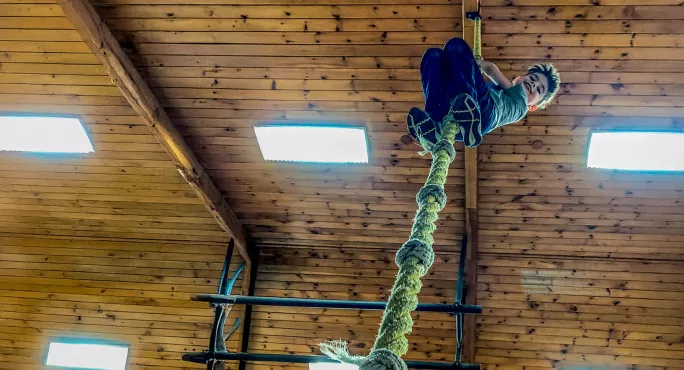PE is unique in schools owing to its focus on the physical health of our children as opposed to the intellectual. If students are to leave school as fully rounded young people - with physical, intellectual and mental rigour - the PE curriculum must be inclusive.
We have to make sure the subject includes everybody, even those who might have decided that they arenŌĆÖt ŌĆ£sportyŌĆØ at a young age and feel that PE isnŌĆÖt for them.┬Ā
PE: battling self-fulfilling prophecies
This can quickly become a self-fulfilling prophecy. If a student gets to secondary school with this view already formed, it is incumbent upon us as teachers to do all we can to break this self-defeating mindset, highlighting the immense positives that physical activity can bring, including fitness, teamwork skills and confidence.
But we must acknowledge that there are barriers to engagement, particularly for girls, who are more often subjected to unrealistic images of physical beauty on social media.┬Ā
Just as some students wrongly write themselves off as not clever, or simply unable to achieve, some do the same with PE, with a lack of self-belief undermining their innate potential.┬Ā
By keeping the PE curriculum varied, well sequenced and inclusive of different abilities, we can tackle these tendencies and ensure that all students feel that PE lessons are for them.
This is not purely a social or emotional issue, however. Access to clubs and sports, particularly for more vulnerable students, such as disadvantaged young people or those with SEND, can be difficult to achieve consistently across the country. Barriers such as a lack of access to funding, equipment, transport and time can mean that sporting potential goes to waste.
By thinking creatively, we can overcome these barriers by making clubs more inclusive and making resources available to allow everyone to participate.
Sport in society
Our free darts club at lunchtimes, for example, has brought students into the realm of physical activity who would have never otherwise considered it. From this, they become comfortable with competition, familiar with PE staff and they grow in confidence, often then picking up other sports from this.
This plays into wider concerns about the accessibility of sports in our society. With ticket prices constantly rising, and popular sports content often only available by subscription, many children are missing out on being inspired by sports and sportspeople.
This hampers our disadvantaged students worst of all, and makes the challenge of engaging them in school sports all the more complicated.
Staff recruitment and retention issues
Combined with this, there are concerns for the state of our subject more widely thanks to the political and staffing landscape.
Previously, there was an abundance of PE teachers, but we have seen a drop of around 7,000 teachers over the past decade. In addition, discussions around real-term cuts in school funding have created uncertainty for teachers and schools across the wider creative curriculum.
These issues mean we risk missing out on spotting the next Bradley Wiggins or Jessica Ennis-Hill. But we also risk our children missing out on better physical, emotional and mental health by deciding that exercise is not for them.┬Ā
We must do all we can to remove these barriers and make clear that PE is a subject for everyone, no matter where you come from.
George Picton is curriculum leader for PE at Tarleton Academy





